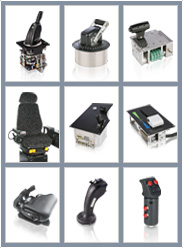News & Events
Agyness Deyn has spent the better part of a decade evolving—trying out roles as varied as runway mainstay, It girl, Five O’Clock Heroes bandleader, and fashion designer. Though she’s experienced varying degrees of success—her clothing line, Title A, has fared far better than her music career—Deyn has proved to be perpetually willing to put herself out there and attempt new artistic endeavors, which makes her latest turn as an acclaimed actress all the more gratifying.
Terence Davies’s sumptuous adaptation of Lewis Grassic Gibbon’s 1932 novel Sunset Song provides Deyn with her first standout acting role as Chris Guthrie, the headstrong Scottish heroine at the heart of the story. The film, which offers Deyn the opportunity to showcase her acting chops as she portrays a working-class heroine coming of age at the start of World War I, is the first of four that Deyn has slated for the coming year. In keeping with her chameleonic reputation, each role is wildly different from the last.
The White King will feature Deyn playing screen legend Jonathan Pryce, while Hail, Caesar brings her into the zany world of the Coen Brothers alongside Tilda Swinton and Ralph Fiennes. Patient Zero offers a new spin on the zombie pandemic genre, with Deyn taking on the role of one of the few survivors. It remains to be seen which of her upcoming projects will be the most successful, but one thing’s for sure: She shows no signs of slowing down.
If you’re rocking a new Windows 10 PC or have upgraded to the latest version of the OS, chances are your disk encryption key has been uploaded to Microsoft’s servers — which means you’re not 100 percent in control of the privacy of your data.
The Intercept reports that this is probably the case if you’ve logged in to Windows 10 with your Microsoft account. That’s useful for accessing your hard drive after something’s gone wrong, but it also means that if a hacker gains access to your Microsoft account, they could make a copy of it for misuse.
So where should you hide your encryption key? Microsoft’s standalone encryption tool BitLocker, lets you back it up to a USB stick, print it out or alternatively save it to your cloud account.
However, while BitLocker offers these options, Windows’ built-in encryption tool automatically uploads your key — and there’s no way to stop it.
It’s also worth noting that If you login to Windows using your company’s or school’s Windows domain, then your recovery key will be uploaded to a server controlled by your company or university instead of Microsoft.
To find out if your key is in the cloud, visit this site and log in with the Microsoft account associated with your PC. You’ll then be able to see recovery keys for your account.
You can delete these keys, but you’ll want to back them up first, perhaps by writing them down on paper and storing the note someplace safe. Microsoft says it wipes your keys from its server immediately upon deletion, and any copies of them on its backup drives are deleted within hours.
If you don’t see any recovery keys, then you either don’t have an encrypted disk, or Microsoft doesn’t have a copy of your recovery key. If you don’t find encryption options in the Settings menu, it’s probably because your computer doesn’t have the Trusted Platform Module (TPM) chip necessary for scrambling your drive’s contents.
To be completely safe, you’ll want to not only delete your key from the cloud, but also generate a new one and avoid uploading it. You can either use BitLocker (available with Windows Pro and Enterprise versions) or a third-party app like BestCrypt.









